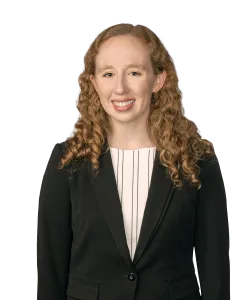EO Seeks to Expand Access to Alternative Asset Investments in Retirement Plans
On August 7, the White House issued an Executive Order (EO) aimed at broadening Americans’ access to alternative asset investments within employer-sponsored defined-contribution retirement plans, such as 401(k) plans.
For purposes of this EO, the term “alternative assets” is broadly defined as follows:
Private market investments, including direct and indirect interests in equity, debt, or other financial instruments that are not traded on public exchanges, including those where the managers of such investments, if applicable, seek to take an active role in the management of such companies.
Direct and indirect interests in real estate, including debt instruments secured by direct or indirect interests in real estate.
Holdings in actively managed investment vehicles that are investing in digital assets.
Direct and indirect investments in commodities.
Direct and indirect interests in projects financing infrastructure development.
Lifetime income investment strategies, including longevity risk-sharing pools.
The EO notes that, while alternative assets are an increasingly large component of public pension and defined-benefit plan portfolios, most Americans saving for retirement through defined-contribution plans have limited or no access to these asset classes. The EO attributes this gap to regulatory overreach, restrictive US Department of Labor (DOL) guidance, and litigation risks that have discouraged plan fiduciaries from offering alternative asset options.
Key Policy Objectives
The order establishes as federal policy that all Americans preparing for retirement should have access to funds that include alternative asset investments, provided that plan fiduciaries determine such access is appropriate for enhancing net risk-adjusted returns on and diversification of participant plan assets.
Action Items and Regulatory Review
Reexamination of Fiduciary Duties: Within 180 days of the EO, the US Secretary of Labor must review and potentially revise existing DOL guidance regarding fiduciary duties under the Employee Retirement Income Security Act (ERISA) as they pertain to the offering of alternative asset investments. This includes consideration of whether to rescind the DOL’s December 21, 2021, Supplemental Private Equity Statement.
Clarification and Safe Harbors: The Secretary is further tasked with clarifying the DOL’s position on alternative assets and the fiduciary process for offering asset allocation funds containing alternative assets. The aim is to balance the higher expenses often associated with alternative assets against the potential for greater long-term returns and diversification, while also curbing litigation that may inhibit fiduciary decision-making in offering investment opportunities to plan participants. The Secretary is also ordered to propose rules, regulations, or guidance, as the Secretary deems appropriate, clarifying the duties that a fiduciary owes to plan participants under ERISA when deciding whether to make available to plan participants an asset allocation fund that includes investments in alternative assets, which rules, regulations, and guidance may include appropriately calibrated safe harbors.
Interagency Coordination: The Secretary of Labor is to consult with the US Secretary of the Treasury, the US Securities and Exchange Commission (SEC), and other federal regulators to ensure coordinated regulatory changes.
SEC Review: The SEC is instructed to consider regulatory revisions that would facilitate access to alternative assets for participants in defined-contribution plans, including potential changes to accredited investor and qualified purchaser definitions.
Additional Department of Labor Developments
On August 12, just days after the EO was issued, the DOL rescinded a December 21, 2021, Supplemental Private Equity Statement issued under the Biden Administration, which cautioned fiduciaries of 401(k) retirement plans from including alternative assets. The 2021 statement asserted that most plan fiduciaries were “not likely suited to evaluate the use of PE investments in designated alternatives in individual account plans.” This guidance was seen as undermining a prior information letter from June 3, 2020, that had been more open to the inclusion of alternative assets.
In connection with the rescission, the DOL remarked that the previous guidance departed from the Department’s traditional, neutral, and principles-based approach to fiduciary investment decisions under ERISA. The DOL emphasized that fiduciaries should evaluate all investment options based on relevant facts and circumstances, without the Department singling out specific asset classes for special scrutiny.
Next Steps
This EO signals a significant policy shift toward access to alternative asset classes for retirement savers, with the potential to reshape the investment landscape for defined-contribution plans and the fiduciary process for selecting plan investments. Plan sponsors, fiduciaries, and asset managers should monitor forthcoming regulatory developments from the DOL and the SEC as the implementation process unfolds.
The Fund Formation and ERISA teams at ArentFox Schiff are monitoring developments in real time and will be tracking the DOL’s 180-day review and upcoming SEC proposals. We are available to provide guidance to assist plan sponsors, fiduciaries, and asset managers on the implications of the EO, and to review, design, and implement effective strategies for incorporating alternative assets into retirement plan investment options within the scope of ERISA’s fiduciary requirements.



